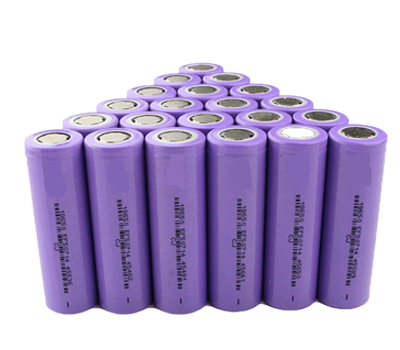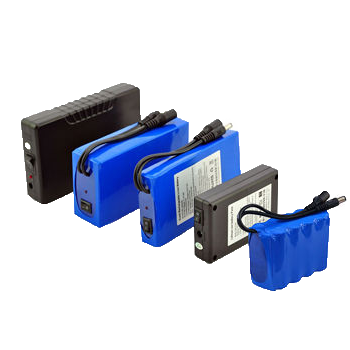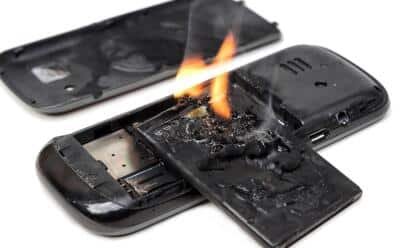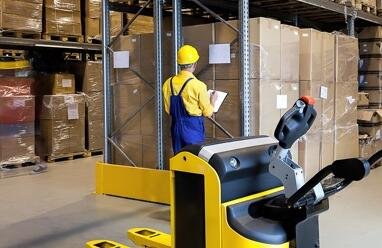The Prospect and Appliations for Lithium Batteries
Lithium battery features
Lithium is the lightest metal element in nature, and about half the density of water. At the same time, it has the lowest electron negativity, the standard electrode potential is -3.45V (standard hydrogenelectrode). So select the appropriate cathode material for the positive electrode, lithium and match, you can get a higher force. Such lithium as the negative electrode of the stack, together with an appropriate electrolyte, the cell assembled, should have the highest specific  energy. It is based on this consideration, the early 1960s to begin research and development of lithium batteries. Since lithium water violent reaction will occur, so when the electrolyte solution is generally have chosen a non-aqueous electrolyte. Early multi-use CuF2 cathode material, etc., but these cathode material readily dissolves in the electrolyte. In addition, the initial battery structural materials in the electrolyte can not stand up well to long-term corrosion, so no real commodity lithium battery.
energy. It is based on this consideration, the early 1960s to begin research and development of lithium batteries. Since lithium water violent reaction will occur, so when the electrolyte solution is generally have chosen a non-aqueous electrolyte. Early multi-use CuF2 cathode material, etc., but these cathode material readily dissolves in the electrolyte. In addition, the initial battery structural materials in the electrolyte can not stand up well to long-term corrosion, so no real commodity lithium battery.
So, how did they come out?
After 1970, Japan’s Matsushita Electric Company successfully developed Li (CFx) n batteries. This battery for the first time to solve the above drawbacks, the real has been applied, and was hailed as one of 1971’s top ten all-new products in Japan. In 1976, Japan’s Sanyo Electric Company launched a Li MnO2 battery, first in calculator and other fields has been widely used. From the early 1970s, first developed Li (CFx) n batteries start to the early 1980s, Japan’s output of lithium batteries has increased dramatically, the annual output of 1988 has exceeded 230 million, became the world promotion lithium best country applications.
Meanwhile, in 1970 the United States established a power converter Limited (Power Conversion Inc.) Specializes in research Li SO2 battery, and in 1971 after officially put into commodity production, the trade name “Eternacel”. The batteries are mainly used for military purposes, was the most promising is known as a lithium battery. Currently in the US military in a variety of portable equipment Li SO2 battery applications has been very extensive.
AND IN FRANCE?
SAFT France in the 1960s began the study of lithium batteries. Dr. Gabano the company in 1970, first to get Li SOCl2 battery patents. In 1973 the United States GTE, Israel Tadi Lang Industries Ltd. (TadiranIsraelElectronicsIndustries, Ltd.) Have been officially produced Li SOCl2 batteries. Especially the latter, in cooperation with Tel Aviv University, has built a plant in 1975. 1977 redesign, build large-scale production equipment and put into production. 1978 Li SOCl2 batteries sold worldwide. Currently, the United States, France, Israel and other countries have been trade. It should be said that so far, Li SOCl2 battery is the world’s practical application of the highest specific energy battery series in a battery. Li SOCl2 battery is one of the hottest international battery industry research.
Let’s back to the north american.
Almost synchronized with the lithium primary battery, countries carried out research for lithium secondary battery. Initial work has focused on the metal halides, metal oxides and other soluble cathode material. But made batteries self-discharge rate, unsatisfactory. The mid-1980s, the successful development of the real lithium secondary battery only Canadian company Moli Li MoS2 battery. But this battery to the early 1990s due to consider other aspects such as security, there has not really entered into millions of households. After 90 years, many scientists are eyeing the lithium-ion rechargeable battery body. We can say that the research and development of lithium secondary batteries still in the research stage, has gradually annihilation research boom in lithium-ion battery system.
lithium battery applications
As the lithium battery has a high energy density, flat discharge voltage, wide operating temperature range, wet and long life holds many advantages, while not contain environmentally harmful mercury, cadmium and lead, metals, has been in the military and everyday life the large number of applications. – Secondary lithium batteries and lithium secondary battery applications  can be divided into – like consumption, applications and application are three types of military industry and in medicine. Consumer applications can be roughly divided into three categories, namely, household goods category, mobile products and automotive supplies. Household goods category most commonly used as a record player, telephone, alarm clocks, watches, cameras, car radios and other power supply.
can be divided into – like consumption, applications and application are three types of military industry and in medicine. Consumer applications can be roughly divided into three categories, namely, household goods category, mobile products and automotive supplies. Household goods category most commonly used as a record player, telephone, alarm clocks, watches, cameras, car radios and other power supply.
Industrial and medical applications can be divided into safe, high-temperature test, measurement and other aspects, mainly used in anti-theft device, large department stores and factories circuit control, typewriters, oil well drilling equipment, pacemakers. Military uses primarily as a memory back-up battery power supply.
The United States and Japan are the world’s largest producer of lithium batteries. US military to focus on lithium. Japan places civilian focus, a virtual monopoly on the world’s civil lithium market. China has abundant mineral resources of lithium, also has the advantage of the development of lithium battery industry.
So, what is the the prospects of lithium batteries?
With advances in technology, the development of earth satellite laptop, microcomputers, digital cameras, mobile phones, medical equipment as well as near-Earth orbit and high- orbit geostationary satellites and other new electronic instruments and equipment, the battery industry has put forward higher requirements. Low cost, high energy density, high voltage, lightweight, wide temperature range, long cycle life, good safety performance a new green power has become a hot research, and a lithium ion secondary battery market has become promising and fastest-growing new batteries. Japan, for example, lithium-ion batteries in Japan in 1993 sales of 1.6 billion yen, while in 1994 surged to 17.9 billion yen, an increase of 11.2 fold to 1995 and turned – Fan reached 33.9 billion yen, 1997 annual sales reached $ 200 million; and in 1996 the output value of lithium-ion batteries in Japan for the first time exceeded NiMH battery in  1997 and more than nickel-cadmium batteries, small rechargeable batteries among the “troika” (referring to lithium-ion batteries, nickel metal hydride batteries and nickel-cadmium batteries) in the first.
1997 and more than nickel-cadmium batteries, small rechargeable batteries among the “troika” (referring to lithium-ion batteries, nickel metal hydride batteries and nickel-cadmium batteries) in the first.
To Sum it up?
Due to increased market demand, from the fourth quarter of 2002, shipments of lithium batteries worldwide has more than NiMH batteries. The fourth quarter of 2003, monthly shipments of lithium-ion batteries to reach 100 million, while NiMH batteries fell to 50 million / month. Shipments of lithium-ion battery is almost twice NiMH batteries. Table 6 for the future of the world in recent years, and the small cell market state. It shows significant advantages of lithium-ion batteries will make it in the mobile communications and other small cell market to gradually replace the nickel-metal hydride Batteries and nickel-cadmium batteries



this sucks